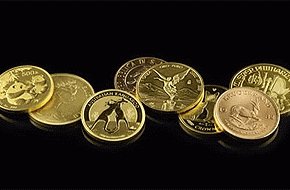
There has been unexpected demand drama in gold markets.
2013 quarter data released by the Gold Council shows that the big players - the central banks and the ETFs - have been buying much less or even quitting their holdings, while individuals have seen opportunity.
In the April to June period, the price of the precious metal went from US$1,598/ounce to US$1,192. That is a huge fall, one where prices were down 25%.
In New Zealand currency, the decline was from NZ$1,912/ounce to NZ$1,541, also a precipitous drop of 19%.
These price falls were a key drama, and perhaps the selldowns by ETF funds were another, driven by hedge funds and other speculative investors continuing to exit their positions.
Certainly the pullback by central banks from their aggressive buying was another. Both reactions can be seen as expected in the face of the price falls.
But a third and somewhat unexpected drama over the period was the sharp increase in buying by individuals.
Jewellery customers were not phased by the price slump. They bought 576 tonnes of jewellery gold in Q2, the highest level in four years (although well below the 1,000 tonnes this market purchased in Q4 2000).
But this enthusiasm is well trumped by individual investors, those who buy coins and gold bars. These investors bought more than 500 tonnes of product, the highest level ever. The lower price seems to have galvanised bearish investors into a buying surge.
At the same time, low prices have dampened scrap supply. There was only 308 tonnes added to the gold markets from scrap in the quarter, its lowest level in four years.
Consumers in China and India are behind the big jewellery increases, followed by those in Turkey and the Middle East. In contrast, jewellery demand in Italy and the UK declined - in fact the decline was over 20% in Britain (home of the WGC and where the main gold market is).

This shift from West to East has been further reinforced by recent data from the LBMA showing that in June the volume of gold transferred between accounts held by bullion clearers hit a second consecutive 12-year high, buoyed by strong Asian physical demand, said Marcus Grubb, Managing Director, Investment at the World Gold Council.

Mine output has been fairly stable, not yet reacting to the price drops. However, it would be expected marginal production will be taken out of production and new projects put on the back-burner if prices stay low.
You can access the World Gold Council reports and data here »
Precious metals
Select chart tabs



We welcome your comments below. If you are not already registered, please register to comment.
Remember we welcome robust, respectful and insightful debate. We don't welcome abusive or defamatory comments and will de-register those repeatedly making such comments. Our current comment policy is here.